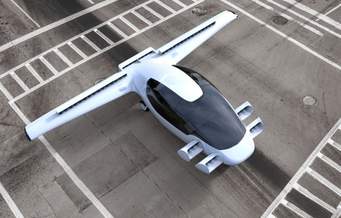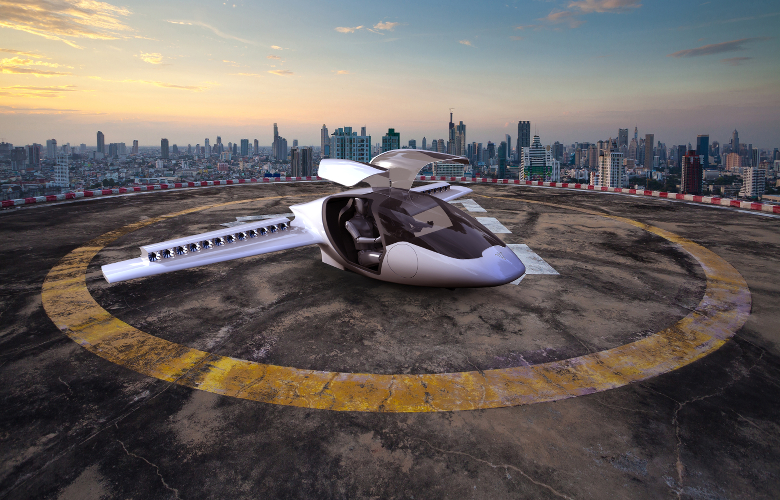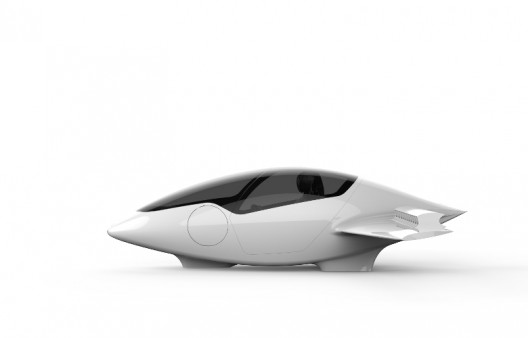Lilium is still in its incubator stage, but drawing a lot of interest for its radical two-seat, high-speed aerial vehicle.
EIT Climate-KIC, one of the funding organizations helping underwrite this startup, includes some startling claims in Lilium’s description.
“Lilium is designing the world’s fastest and highest-range electric aircraft that is commercially available.
“The two-seated light aircraft consumes half the energy of today’s most efficient electric cars and is so quiet that it can’t be heard flying in 1 km (@3,300 feet) altitude. It is propelled by electric impeller engines and features an extensive safety concept comprising a 3-fold redundant fly-by-wire control system, 12 redundant batteries and engines as well as a parachute rescue system for the whole aircraft.”
The ESA Business Incubation Center, another of Lilium’s backers, has more: “Lilium is developing, building, and selling a two-seated electric jet capable of vertical take-off and landing (VTOL). The company was founded in February 2015 by four engineers and Ph.D students from Technische Universität München. Lilium has developed an entirely new aircraft concept for vertical take-off (patent pending) that opens the door to a new class of simpler, safer, quieter, and more enduring VTOL aircraft. It has validated the concept with several scaled prototypes weighing 25 kg, and is now developing its first product: a two-seated ultralight VTOL jet. Lilium has a highly diversified team of experts in fields ranging from aerodynamics, flight control, and CFRP (carbon fiber reinforced plastic) structures to electric propulsion and product design. Together, its members are developing aircraft designed for use in everyday life.”

Rendering shows two canards with six ducted fans each in possibly earlier version
Promising to combine the weight of a European ultralight aircraft (472 kilograms, or 1,038.4 pounds all-up weight) with vertical takeoff and landing and 450 kilometers per hour (279 mph) top speed with an all-electric range of 500 kilometers (310 miles), Lilium would give Volocopter, Leaptech and Joby Aviation’s S2 runs for their money.

Version shown on current web site shows one retractable canard
Theoretically, it would be safer than conventional airplanes or helicopters, using a triple-redundant control scheme and up to 42 ducted fans for vertical lift and forward thrust. Lilium states, “Its batteries, engines, and controllers are redundant, making the Lilium Jet a much safer concept than conventional helicopters.”
It would be a premium ride, with a side-by-side cockpit, touchscreen, joystick controls, wing doors, capacious luggage space, and automatically folding wings. Last miles getting from the landing site to a final destination would involve folding the wings and driving Lilium as a very compact car. Keeping a minimum of 36 motors, controllers and the necessary batteries within the confines of Lilium’s sleek pod, hauling a 180 kilogram (396 pound) payload and achieving the range target envisioned by Lilium would seem a challenge.

Lilium’s compact pod shape is highly aerodynamic and somehow contains passengers, batteries and triple-redundant controllers
Lilium has more tricks than a Transformer® toy, with motors pivoting to provide vertical or horizontal thrust, and popping out on retractable canards as needed.
The aircraft’s projected 320 kilowatt (435 horsepower) output could be handled by even existing powerplants such as the Flytec HP-10, but its weight, for example, would make achieving payload goals difficult. At 3.75 kilograms (8.25 pounds) per motor, even 36 would total 297 pounds – a substantial portion of the craft’s maximum all-up weight. The video shows a different type of motor, which including fan and controller would have to be much lighter. 36 motors would have to put out 8.88 kilowatts each for the total, and 42 (shown in some concept renderings) would have to produce 7.6 kW each.
Batteries capable of lifting over 1,000 pounds and pushing the airplane at projected speeds, even for the 1.2 hours required to fly 300 miles at 250 mph would have to be superior to those available today. Subtracting the payload from the all-up weight leaves only 642 pounds for aircraft structure, motors, batteries, and all the systems necessary for the transformations which Lilium undergoes on its journey. Color this editor respectfully skeptical, but hopeful for advances in motors and energy storage.
We get basic details and illustrations on Ilium’s web site, and even more detail from Daniel Wiegand, Lilium’s CEO, in his presentation at London’s 2015 Eco Summit.


Comments 1
Existing Plettenberg motors are less than 1.5kg for almost double that peak power rating. Better is possible. With so much redundancy, it’s possible to design close to the edge. The batteries are more the issue.